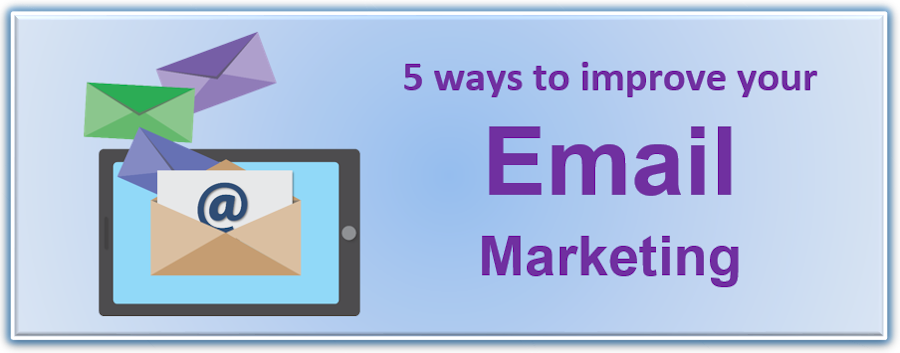I write a lot of email campaigns for my clients and there are a few smart strategies I’ve picked up from experts over the years. These are my top five:
1: Write an ‘open me’ headline
When it comes to email your ‘headline’ is what you write in the subject line. It doesn’t matter whether you’re writing a monthly newsletter or a focused campaign to promote a specific product or service – the subject line needs to get attention and make people want to know more.
Acme Widgets Newsletter January 2017 won’t cut it! We all get plenty of newsletters – most of which are not even slightly interesting.
To get your audience interested you need to know what will get their attention. What are their problems? What is giving them grief right now? What words will connect with them?
Questions are often a good way to catch attention, but big benefits – like 7 ways to double your profits – also work well.
2: Stick to the point
Don’t fall into the trap of waxing lyrical about your product or service, most people have the attention span of a gnat when it comes to readying email – especially what they will see as non-essential communication.
Whatever you’ve promised (or implied) in the subject line needs to be followed up in the body of the email. Give the benefits, a brief explanation of what your product/service will do for them and a call to action (what do you want them to do next?) is enough.
Stick to one promotion per email or campaign. Don’t confuse your reader with too many options.
3: Keep it simple
More about simplicity – you don’t need a super-duper HTML email with lots of bells and whistles. Firstly, not everyone gets HTML – some organisations block them and deliver only plain text. If your key message is in a graphic, the reader simply won’t see it.
Also – to put the boot on the other foot – what do you think when you see a glitzy html email land in your inbox? My bet is that you think ‘what are they selling?’ Nobody reads obvious sales emails – you want to get people engaged enough to at least take a look at the message.
4: ‘One swallow does not make a summer’
A newsletter and an email marketing campaign are not the same thing. A newsletter needs to lead with value and follow up with promotion. An email marketing campaign is focused on promotion first and foremost.
One email is not enough – a campaign needs at least three messages – and can be as many as 10 or 12. If you’ve ever signed up to any of the professional marketers lists you’ll see that they often send more than one email a day. I’m not suggesting that you do this – although for a certain audience it works.
My suggestion is that you aim at an email every 3-10 days, depending on the audience and what you’re promoting.
- Promote the same product/service consistently
- Use a different subject line for each email
- Send them on different days of the week (so if someone isn’t in the office or has a busy day each week, they will see one of the messages on a different day). There are stats that say that Tuesday is the best day at 11am or 2.30pm – but that depends on your audience and doesn’t take into account people with specific work commitments
- Pick a time when your audience are more likely to be browsing whether that’s mid-morning when they stop for coffee or late afternoon when they’re winding down.
5: Stylish communication
Think carefully about the style and tone of your email. If you’re targeting corporate enterprises it can be easy to fall into formal, business-speak. This often results in the energy in your email getting lost.
If you normally talk with enthusiasm then you shouldn’t filter that out. People who send friendly emails that sound as if they are talking directly to the reader get a much better response.
Having said that, your communication style needs to be congruent with all your other material – website, blogs, social media, marketing flyers, etc.
Now you’ve got the keys to success – good luck with your next email campaign.

